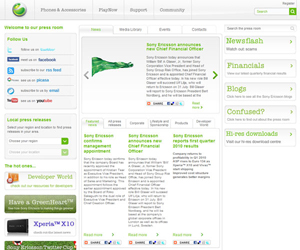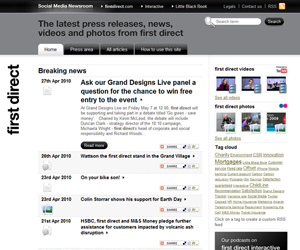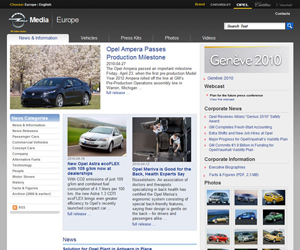Communicate Magazine’s Social Media in a Corporate Context conference yesterday ran a session examining social media newsrooms in the style of The X-Factor. Yes, really!
If we’d been assessing each of the sessions of the day to see whether they should go through to the next stage, this one would have got my vote.
Naturally, nobody was publicly humiliated and bleeped off stage, but the format of the session was entertaining, and enabled us to see 3 corporate social media newsrooms in some detail, with highlights presented by their ‘owner’, with commentary on each from the panel of 3 experts, and then questions from the floor.
This meant that we could hear from the inside about the issues involved in getting the newsrooms established, which included:
- meeting the requirements of the Legal and Compliance teams
- dealing with the difficulties of using legacy IT systems
- and the organisational difficulties in dealing with large companies with a lot of historical momentum going in the traditional direction.
These issues, which were mentioned several times, received a lot of nods and smiles from the audience, who clearly recognised the situations the speakers had found themselves in.
We heard about the intentions of the companies in moving towards a social media newsroom, and some of the benefits they found:
- projecting good news, and news to interest consumers, not just professional journalists
- supporting a brand refresh, with new brand values including ‘openness’ requiring that this be demonstrated on the corporate site
- significant increase in the number of visits per week – from 5 per week to over 2,000
- decrease in time-to-publish, so they were able to respond faster, which was of particular benefit in managing crises
- the ability to provide embeddable, sharable content for visitors to reuse, reaching their target influencers and spreading the brand message.
I was particularly impressed by the astonishing increase in the number of visits to the newsroom achieved by going social. This, together with the statistics presented by Simon Henderson from Centrica in a later session – that visitors to their CSR blogs visited 11 more pages than the average visitor, spent 8 minutes longer on site and were 10% more likely to return – makes a good argument for moving in this direction.
The experts appeared to be enthusiastic about all the sites, picking up on different good features of each. There did seem to be a slight divergence among the three on whether or not it was a good thing to merge news intended for consumers, news intended for the professional journalist, and content intended for reuse or sharing, with a suggestion that it could be of benefit to have a dedicated area for the professional in case of crisis. Two of the responses that I noted to these questions were:
- the ‘contestant’ (in this case Merran Wriggley from Sony Ericsson) responded that they didn’t mind who was visiting (that is, whether it was a traditional journalist or a blogger) but were much more interested in where their material was used
- one of the judges (Stuart Bruce from Wolfstar Consultancy) later pointed out that one option could be a popup mini-site triggered in case of need, and available from the social media newsroom, to provide a dedicated area for crisis communications.
For me, this was the standout session of the conference, and it’s well worth looking at all three of the newsrooms examined. I’ve included images (just click the image to see a bigger version), but they don’t really do them justice. Why not have a look at the newsrooms (links under each image above), and then let us know which you’d vote for – and why?
Lucy is Editor at Corporate Eye





